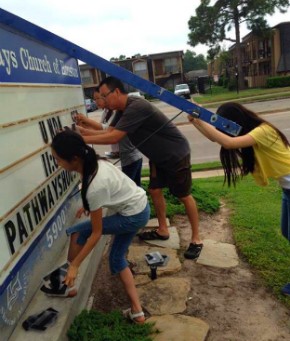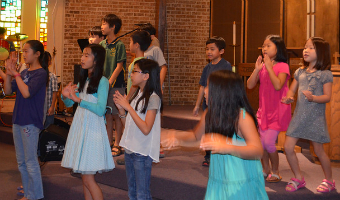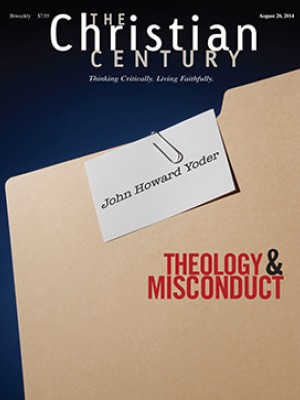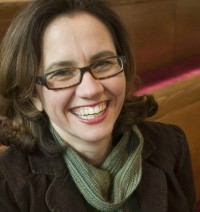Something old, something young

While serving as an English-speaking pastor at a Korean congregation, Shawn Kang came to understand the particular struggles of second-generation Korean Americans. When he decided to plant a new congregation in the Houston area, he reached out to young Asian Americans—and Pathways of Houston began.
As a minister in the Presbyterian Church (U.S.A.), Kang had a lot of denominational encouragement, but the local governing body didn’t have financial resources to offer, so the small group met in living rooms and coffee shops. Kang’s wife, Sanghee, worked as a nurse and supported the family. “We just scraped it together,” Shawn said. Six to eight people assembled for worship week after week. Other people trickled in slowly.
Read our latest issue or browse back issues.
Though Pathways felt called to minister to Asian American young adults, that focus didn’t last long. People grew older. People invited their friends. They got married and began forming biracial families. The community moved out of living rooms and began renting spaces. Then something unexpected happened.
In another Houston neighborhood, St. Giles Presbyterian Church, whose members were mostly white and in their sixties and seventies, called Lynn Hargrove as interim pastor. The congregation wondered if she would be their last minister. When Hargrove heard members talk about closing, she led them through a discernment process. The leadership at St. Giles set attendance, membership, and budget benchmarks so that when they reached those numbers they would know they needed to make a decision. Then the church got to work.
The members went out into the neighborhood and asked a few questions. They wanted to know, “What are the three biggest problems in our neighborhood?” “What do you think about St. Giles Presbyterian Church?” And, “How can we pray for you?” They found out that very few neighbors knew much about the church, except for those who were experiencing homelessness.
Soon after, when the temperatures in Houston dipped down into the twenties, St. Giles opened up its doors and invited people to sleep inside. That was an important moment, said Hargrove. “When the doors of the church were unlocked, we became an active part of the community.” She sensed that the church was also beginning to understand that it might have to let go of the building.
St. Giles members looked at a couple of options. They could sell the property and meet in another space until they spent all of their money. Or they could leave their building to Pathways, which was the new, growing church in their area. The decision became a bit clearer when Hargrove decided not to renew her contract. St. Giles members used their remaining savings to replace the air conditioner, handed over the property to Pathways, and began to attend other churches.
A few months after Pathways settled into its new home, former St. Giles members began to worship with them. At a recent new member class, about 30 of Pathways’ 40 new members were from St. Giles. The former St. Giles members had to learn not to sit in the same pews as before and had to remember to call the church by its correct name. But they never had any undue sense of entitlement over the way Pathways ought to be run.
 |
| Members of the youth and children’s ministry lead part of a church service. |
The intergenerational aspect of the congregation’s current life is beautiful: the children now have a lot of grandparent types doting on them. And the older members appreciate the energy and vitality of Pathways.
There are new issues to confront. Pathways always relied on small groups, and the young members met in the evening, after they got home from work. Now a portion of the congregation doesn’t like to leave the house at night, so the church is trying to figure out how to keep small groups without isolating any part of the community. Though its liturgy is traditional, Pathways has always had contemporary music with a band. Now it is experimenting with hymns and blended worship. Everyone is a little bit uncomfortable during some portion of the service. “We’re still navigating all of that,” Kang confesses.
In the process, Pathways has become much more diverse, racially and economically, as a result of white members from St. Giles and outreach to African Americans, Haitians, and Hispanics in the neighborhood.
As Hargrove looks back on the process, she thinks that there are lessons for the larger church. The former members of a once dwindling congregation are now worshiping with 150 diverse people, and they are amazed at God’s presence within it all. What St. Giles gave to Pathways has been a gift to the former members as well, said Hargrove. “It’s been a resurrection.”







